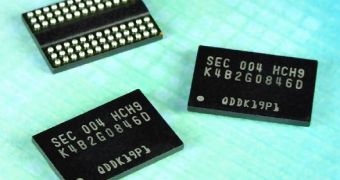The saga of DRAM hardships continues yet again, with just one type of memory module succeeding in avoiding a further decline in average selling price, according to most recent reports.
The IT segment may be eager and excited about upcoming CPUs, GPUs and mobile platforms, as well as new software, but not all things are rosy.
Granted, Intel, AMD and NVIDIA do manage to supply a measure of encouraging information about the future of IT, as does Microsoft's upcoming Windows 8 OS.
Still, this does nothing to erase the fact that the economic recession hasn't completely gone away.
The DRAM segment is one of the fields that has been suffering the most lately, although there are other causes besides economic turmoil.
Either way, random access memory has been in dire straits because consumer demand has been just so incredibly low that prices have been falling for about a year, or more.
Even raising the standard RAM capacity of PCs to 4 GB instead of 2 GB didn't really help demand much.
Now, it is reported that the month of September, 2011 isn't proving to be any more merciful, though 2 GB DDR3 modules did manage to stay flat, at US$10.75 on average.
Meanwhile, 4 GB parts fell again, to US$20-21, which means that 1 Gb and 2 Gb chips are at US$0.52 and US$1.13, respectively.
Fortunately, spot prices seem to be gaining momentum, of some sort (2 Gb DDR3 rose by 9% in one day on September 14), so the segment may finally stabilize, if not this month then perhaps the next one.
Nonetheless, this isn't going to change the fact that the second half of 2011 will see a worldwide output reduction of 12%.
Moving forward, DRAM makers intend to make their product lines more diverse or will focus on producing on an OEM basis.

 14 DAY TRIAL //
14 DAY TRIAL //